
Self-guided tour
Fort Anne National Historic Site
Discover four hundred years of history here at Fort Anne in Annapolis Royal. Lace up your shoes for a stroll inside the fort and around the Perimeter Trail. Walk the earthen walls, explore the 1797 Officers’ Quarters Museum, and soak up thousands of years of the region’s history.
Plan to spend a minimum of two hours to get to know the full scale of the fort. Spend an entire day to experience the exhibits, have a leisurely tour of the grounds, enjoy a Parks Canada Perfect Picnic, and visit nearby attractions.
We encourage you to pick up a site map at the Officers' Quarters Museum and explore the site at your own pace. The booklet Capitol, Colony and Bastion: The story of Fort Anne National Historic Site, Canada’s Oldest National Historic Site is a great self-guiding resource and is available for purchase at the Officers' Quarters.
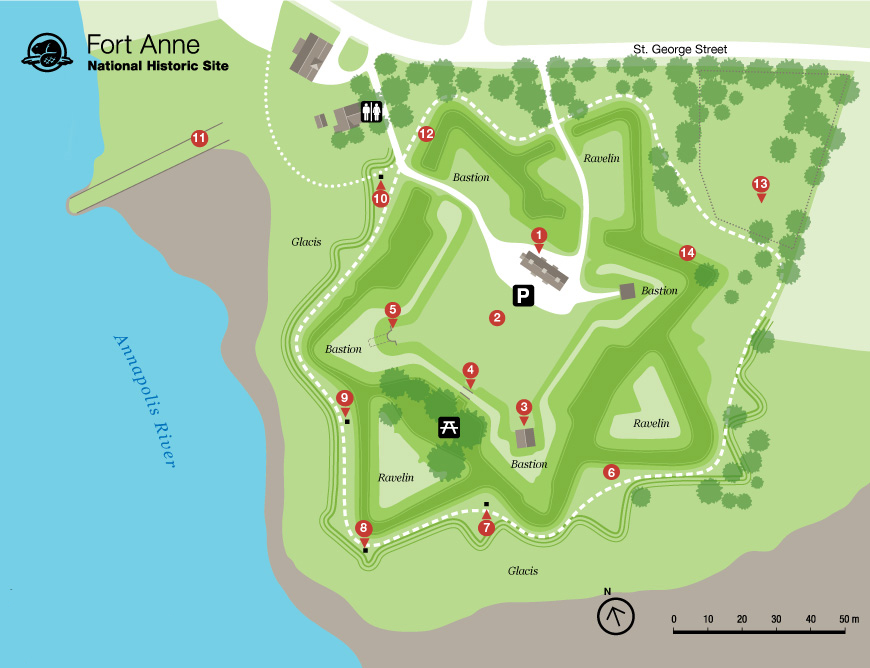
This map shows the features of interest and facilities and services at Fort Anne National Historic Site.
Features of interest
1. Officers’ Quarters Museum
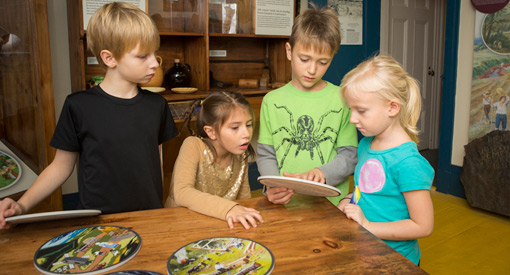
Immerse yourself in the history of the region inside the Officers’ Quarters Museum. Use innovative technology to delve deeper into the social, cultural, and military stories of all peoples connected to this place, including Mi’kmaq, Scottish, French, British, Acadian, and African Nova Scotians. Explore how the site has changed over time and what it means now to the people of Annapolis Royal and Canada.
Things to see and do:
- Listen to stories about Mi’kmaq history and culture
- See an original copy of the Nova Scotia Charter from 1621
- Dress as a soldier of the Troupes de la Marine
- See the actual key to Fort Anne
- Learn about the Covenant Chain of Treaties at the Treaties table
- See the incredible Fort Anne Heritage Tapestry
- See a selection of artifacts found on site
2. Parade square
The open space in front of the Officers' Quarters is called the parade square.
Signs around the perimeter show where some of the buildings were when the fort was garrisoned, including a store house, the governor's residence, barracks site, and the chapel site.
3. Powder magazine
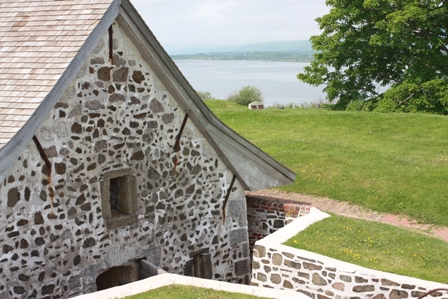
Look inside Parks Canada’s oldest building!
In the south corner of the Parade Square is a restored Powder Magazine, originally constructed by the French in 1708.
There are barrels stacked on one side, and a cool draft comes through slotted openings to keep the powder dry. The slots were also designed to keep out sparks and flames, which would have ignited the whole supply.
The walls are much thicker than the roof, which is actually designed to blow outward, making it easier for the walls to absorb the impact. In the event of an explosion, damage to the fort is minimal.
4. Sally port
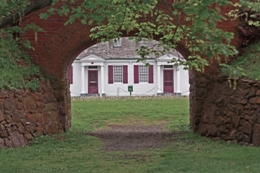
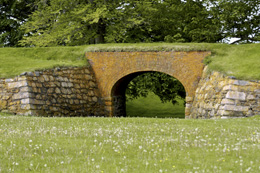
The Sally Port is located along the southwest side of the Parade Square. This entrance into the fort grounds was used by the British, while the French had a bridge here earlier.
Many popular pictures of the Officers’ Quarters were taken through this opening.
5. Black hole

In the far corner of the Parade Square is another structure known as the Black Hole. This powder magazine was built into the west bastion by the French.
After 1740, it was abandoned as a magazine because of chronic dampness, and was used sporadically as a prison by the British.
6. Earthworks
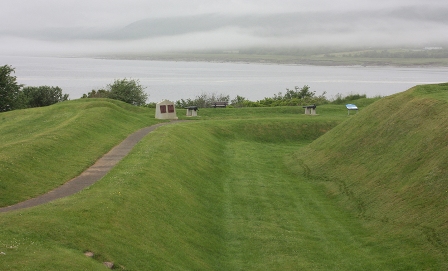
The Earthworks have some of the most striking features of the fort, and contain the best surviving example in North America of a Vauban fort.
Vauban (1633-1707) was a French military engineer. A Vauban fort is essentially a star shaped fort. The four projecting corners are called bastions and the triangle of earth in front of the walls are ravelins. This allowed for protection on all flanks. The fort is surrounded by a dry moat with very steep banks, followed by the glacis, an open sloping area also surrounding the fort. The glacis was intended to make secret approaches by enemies impossible.
7. Jean Paul Mascarene monument
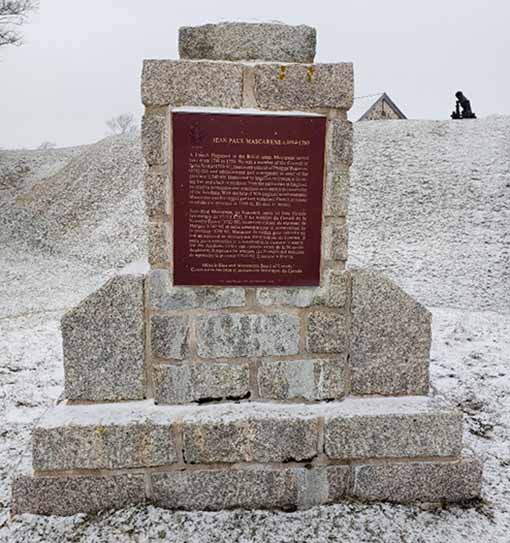
Jean Paul Mascarene’s efforts and influence on this area were of such importance that the fruits of his labour are reflected in the community, and all of Acadia, to this day.
Historic Sites and Monuments Board of Canada:
JEAN PAUL MASCARENE c.1694-1760
A French Hugenot in the British army, Mascarene served here from 1710 to 1750. He was a member of the Council of Nova Scotia (1710-1750), lieutenant-colonel of Philipps’ Regiment (1742-50), and administrator and commander-in-chief of the province (1742-49).
Hampered by insufficient troops, a decaying fort, and a lack of guidance from the authorities in England, he tried by persuasion and conciliation to ensure the neutrality of the Acadians.
With the help of New England reinforcements, Mascarene and his ragged garrison withstood French attempts to retake the province in 1744-46.
He died in Boston.
8. Charles Fort and d’Aulnay monument

Forts under forts under forts. Stand where the first and second forts were built on these grounds. Washed away and buried by progress, archeological remnants still exist below the surface.
Plaque Text
CHARLES FORT
A group of about 70 Scottish settlers began a colony here in 1629, eight years after King James I granted 'Nova Scotia' to Sir William Alexander. Led by Alexander's son, the Scots built a small fort, the remains of which lie beneath Fort Anne. Despite many deaths during the first winter, the surviving colonists thrived on agriculture, fishing, and trade with the Mi'kmaq. Most returned to Great Britain in 1632 after France reacquired the region by treaty. Although the colonization attempt was short-lived, the province of Nova Scotia owes its name, flag, and coat of arms to this early Scottish settlement.
Plaque Text
CHARLES DE MENOU D'AULNAY (v. 1604-1650)
This eminent sea captain played a key role in the settlement of Acadia. He commanded La Hève and Port Royal in 1636, and became governor of Acadia in 1647. Over a fourteen-year period, he oversaw the construction of forts, mills and schools and ventured into shipbuilding. He drained marshes with a system of dykes and tide gates, enabling settlers to survive through agriculture. Charles de Menou d'Aulnay was one of the great architects of French settlement in Canada.
9. Samuel Vetch monument
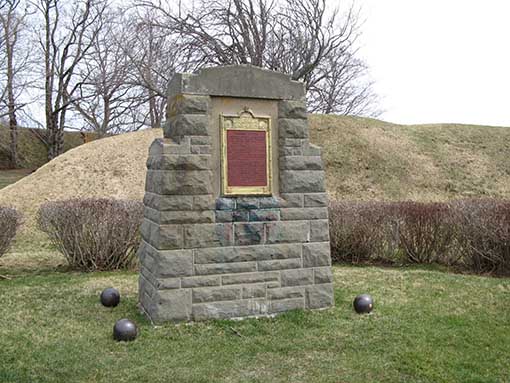
Samuel Vetch was a man of great importance to the history of Fort Anne, Nova Scotia, and the expansion of the British Empire.
Monument:
SAMUEL VETCH
Adjutant-General of the force under Colonel Francis Nicholson, which captured Port Royal, Capital of Acadia, in 1710.
First Governor and Commander-in-chief. A notable figure in colonial history. An able soldier and administrator.
With Imperial vision he strove to extend the realm of Britain beyond the seas.
Erected 1928
10. Pierre Dugua, Sieur de Mons monument
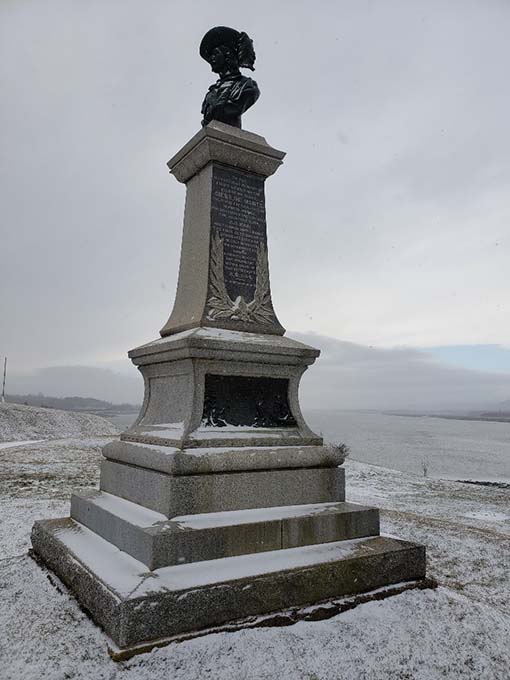
Pierre Dugua, Sieur de Mons is an often overlooked giant in European exploration and settlement of North America. The text is dated and very Eurocentric, but the monument is a testament to a man of great importance nonetheless.
Pierre Dugua led the French expedition that created the first permanent European settlement in North America north of St. Augustine, Florida – in what was to become Canada. He also helped to establish a relationship with the Mi’kmaq that would influence events in the Maritimes for decades to come.
Monument:
To the illustrious memory of Lieut. Gen’l Timothé Pierre du Guast, Sieur de Monts, the pioneer of civilization in North America, who discovered and explored the adjacent river, A.D. 1604, and founded on it’s banks the first settlement of Eurpeans north of the Gulf of Mexico. The Government of Canada reverently dedicates this monument within sight of that settlement, A.D. 1904.
Genus immortale manet
11. Queen’s wharf

The wharf was used by both the French and British when occupying the fort.
Things to see and do:
- Walk on the last piece of land that many Acadians set foot on before being deported in 1755.
- Sit in the red chairs and take in the timeless view.
12. Perimeter trail

The best way to see the Earthworks (#6) is to walk around the Perimeter Trail that circles the fort.
Experience the full scope of the grounds and enjoy an excellent view of the Annapolis River and basin all the way to Digby, approximately 24 kilometres away!
13. Fort Anne cemeteries
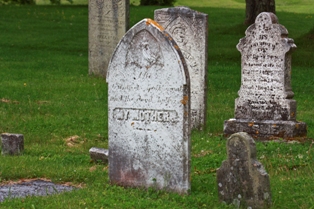
The Acadian and French Cemetery and the Garrison Graveyard served as the final resting place of Acadians, British citizens, French and British soldiers, and diplomats that lived in Annapolis Royal over the past 350 years.
Some of the oldest grave markers in Canada are found here, and remember, there are many more burials here that are far older than the stones.
14. Cold case burial site
The final resting place of an 18th century soldier whose remains were found on the shore, just below the fort walls.
Visit the Discovery Room in the Officers’ Quarters Museum to uncover the soldier’s identity!
Facilities and services
![]() Parking
Parking
![]() Washrooms
Washrooms
![]() Picnic area
Picnic area
- Date modified :